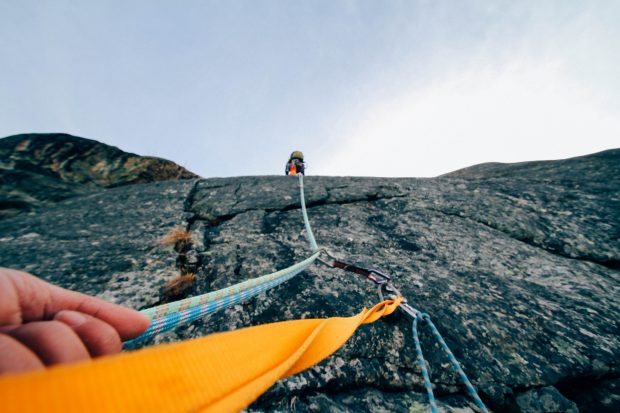Three types of rock for climbing and climbers

There are three main types of rock which regular climbers come across. There are slabs, vertical faces, and overhanging walls. These consist of various types of rock; metamorphic rock, igneous rock (for example granite, quartz, and monzonite), and the sedimentary types, which include sandstone, limestone and conglomerate. Each type of rock erodes and evolves in a particular way, which will demand different techniques of the climber.
Igneous rock

Igneous rock, which is the bedrock of the earth’s crust, will have eroded into slabs or vertical faces. such examples are the Tuolumne Meadows, the South Platte area, and the Yosemite Valley. You will seldom find this rock forming overhanging walls and caves. In the cases where it does, the formations are holdless.
Volcanic rock, which is a form of igneous rock, is what forms on the earth’s surface usually in lava flows. It usually forms vertical faces with the occasional overhanging piece. This type of rock is seldom found in slabs.
Sedimentary rock

Sedimentary rock, such as limestone, on the other hand, is formed by deposits at the bottom of oceans. This type of rock often forms overhanging walls and caves like the ones found in Rifle Mountain Park, Shelf Road, and Jack’s Canyon.
Metamorphic rock

Metamorphic rock occurs when the rock is altered by forces such as heat or pressure, often forming slabs and vertical walls. It has been known to erode into somewhat overhanging faces.

Slabs
Slabs are rock faces where the angle is less than 90 degrees, as in less than vertical. Climbing these faces requires a good sense of foothold and what it takes to maintain a proper balance. You will need rock shoes with lots of friction. On these climbs, you have to keep your weight on your feet. You will need to make use of tiny holes in the rock or rely on the shoe rubber to hold onto the smooth rock.
This is called smearing, and the holds you have to use are called friction holds or smears. You need to use your hands and arms more for balance than for pulling while moving upward using your feet. The best slab climbing areas in the United States are:
- South Platte Area, Colorado
- Looking Glass Mountain, North Carolina
- Tuolumne Meadows, California
- Joshua Tree National Park, California
- Whitehorse Ledge, New Hampshire
Vertical faces

This type of climbing is at 90 degrees. Sometimes these faces are a bit less than 90 degrees but are referred to as vertical, as they require the same climbing techniques to be used. Footwork here is very important. It is vital to keep your weight on your feet as much as you can, this will avoid overworking your arms, which might overtire and fail. Here, foot techniques include inside and outside edging and smearing. You will need to find your correct center of gravity, stay upright and use your arms and hands for pulling yourself up.
The very best vertical climbing areas in America are:
- Shawangunk, New York
- Shelf Road, Colorado
- Red River Gorge, Kentucky
- New River Gorge, West Virginia
- Smith Rock, Oregon
These all offer great vertical climbing opportunities.
Overhanging faces
Overhanging faces are those that are more than 90 degrees. Climbing these requires a lot of upper body strength and excellent technique to successfully complete them. Without these, you will not get far. These climbs also need expert footwork. Here, heel-hooks and toe-cams are the techniques required. These take a climber’s weight off his or her arms. Finding and using rests is an important skill needed for climbing overhanging faces.

There are quite a lot of these particular features in America such as:
- Rifle Mountain Park, Colorado
- American Fork Canyon, Utah
- Red River Gorge, Kentucky
- Rumney, New Hampshire
- Kaymoor at New River Gorge, West Virginia

If you have any comments then please drop us a message on our Outdoor Revival Facebook page
If you have a good story to tell or blog let us know about it on our FB page, we’re also happy for article or review submissions, we’d love to hear from you.
We live in a beautiful world, get out there and enjoy it.
Outdoor Revival – Reconnecting us all with the Outdoors.
